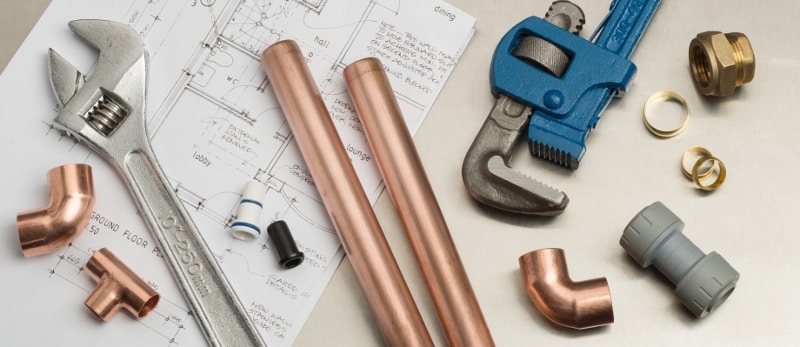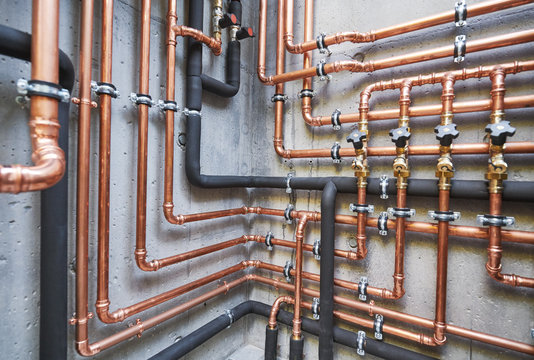The Complete Look at Your Home's Plumbing System Anatomy
The Complete Look at Your Home's Plumbing System Anatomy
Blog Article
Presented here down the page you will discover additional sensible news pertaining to Anatomy of a House: Understanding the Components.

Understanding exactly how your home's plumbing system functions is essential for every homeowner. From delivering clean water for drinking, food preparation, and showering to securely removing wastewater, a well-kept plumbing system is essential for your family members's health and comfort. In this detailed overview, we'll explore the intricate network that composes your home's plumbing and offer suggestions on upkeep, upgrades, and taking care of usual concerns.
Intro
Your home's plumbing system is more than simply a network of pipes; it's a complex system that ensures you have access to clean water and effective wastewater removal. Knowing its elements and how they work together can assist you stop expensive repair work and guarantee everything runs smoothly.
Basic Components of a Plumbing System
Pipes and Tubing
At the heart of your plumbing system are the pipes and tubes that bring water throughout your home. These can be constructed from various materials such as copper, PVC, or PEX, each with its benefits in regards to longevity and cost-effectiveness.
Fixtures: Sinks, Toilets, Showers, etc.
Fixtures like sinks, bathrooms, showers, and tubs are where water is utilized in your house. Comprehending exactly how these fixtures connect to the pipes system aids in diagnosing problems and planning upgrades.
Shutoffs and Shut-off Factors
Shutoffs regulate the circulation of water in your plumbing system. Shut-off shutoffs are critical throughout emergencies or when you need to make repairs, allowing you to separate parts of the system without interrupting water flow to the whole home.
Water System System
Main Water Line
The main water line connects your home to the local water system or a personal well. It's where water enters your home and is distributed to various components.
Water Meter and Pressure Regulator
The water meter measures your water use, while a pressure regulator ensures that water flows at a secure pressure throughout your home's plumbing system, preventing damages to pipelines and fixtures.
Cold Water vs. Hot Water Lines
Comprehending the distinction in between cold water lines, which provide water directly from the main, and warm water lines, which bring heated water from the water heater, assists in troubleshooting and preparing for upgrades.
Water drainage System
Drain Pipes and Traps
Drain pipelines carry wastewater far from sinks, showers, and commodes to the sewer or septic system. Catches protect against drain gases from entering your home and also catch particles that could create blockages.
Ventilation Pipelines
Ventilation pipes permit air into the drainage system, protecting against suction that could reduce drain and cause catches to empty. Correct air flow is important for keeping the integrity of your plumbing system.
Relevance of Appropriate Drainage
Making sure appropriate drainage avoids backups and water damages. Consistently cleaning drains pipes and maintaining catches can avoid pricey repair work and prolong the life of your pipes system.
Water Heating System
Sorts Of Water Heaters
Hot water heater can be tankless or traditional tank-style. Tankless heating units warmth water on demand, while containers store warmed water for immediate use.
Just How Water Heaters Link to the Pipes System
Understanding how hot water heater connect to both the cold water supply and hot water distribution lines assists in diagnosing issues like inadequate hot water or leaks.
Upkeep Tips for Water Heaters
Consistently flushing your hot water heater to remove sediment, examining the temperature settings, and examining for leakages can extend its life expectancy and enhance power efficiency.
Typical Pipes Issues
Leaks and Their Causes
Leakages can take place due to maturing pipes, loosened installations, or high water pressure. Attending to leakages without delay protects against water damage and mold development.
Clogs and Blockages
Blockages in drains pipes and commodes are frequently triggered by purging non-flushable things or a build-up of oil and hair. Using drain screens and bearing in mind what drops your drains pipes can protect against obstructions.
Signs of Plumbing Issues to Look For
Low tide stress, sluggish drains pipes, foul odors, or abnormally high water bills are signs of potential plumbing problems that ought to be dealt with without delay.
Plumbing Maintenance Tips
Regular Inspections and Checks
Set up yearly pipes examinations to capture problems early. Try to find indicators of leaks, corrosion, or mineral build-up in taps and showerheads.
Do It Yourself Upkeep Tasks
Basic tasks like cleaning faucet aerators, checking for toilet leakages making use of color tablet computers, or shielding exposed pipes in cold climates can prevent significant pipes concerns.
When to Call a Specialist Plumbing
Know when a pipes concern calls for expert know-how. Attempting intricate fixings without correct understanding can cause more damages and greater repair service expenses.
Updating Your Pipes System
Factors for Upgrading
Upgrading to water-efficient components or changing old pipelines can enhance water quality, reduce water costs, and boost the value of your home.
Modern Pipes Technologies and Their Advantages
Check out technologies like clever leakage detectors, water-saving bathrooms, and energy-efficient water heaters that can save cash and minimize environmental impact.
Price Factors To Consider and ROI
Determine the upfront prices versus lasting savings when taking into consideration pipes upgrades. Numerous upgrades spend for themselves with reduced energy bills and less repair services.
Environmental Effect and Preservation
Water-Saving Components and Devices
Setting up low-flow faucets, showerheads, and commodes can significantly reduce water use without compromising performance.
Tips for Decreasing Water Usage
Basic practices like fixing leakages immediately, taking shorter showers, and running complete tons of laundry and dishes can preserve water and reduced your utility expenses.
Eco-Friendly Plumbing Options
Consider sustainable pipes materials like bamboo for floor covering, which is durable and environmentally friendly, or recycled glass for kitchen counters.
Emergency Readiness
Steps to Take Throughout a Plumbing Emergency situation
Know where your shut-off shutoffs are located and just how to shut off the water in case of a ruptured pipe or significant leak.
Value of Having Emergency Contacts Helpful
Keep get in touch with details for local plumbing technicians or emergency situation services conveniently offered for quick action during a plumbing situation.
DIY Emergency Situation Fixes (When Appropriate).
Short-lived fixes like using air duct tape to patch a dripping pipe or positioning a container under a trickling faucet can decrease damage till an expert plumbing gets here.
Final thought.
Recognizing the composition of your home's pipes system empowers you to maintain it efficiently, conserving time and money on repair services. By following routine upkeep routines and remaining educated concerning modern pipes technologies, you can ensure your plumbing system operates effectively for years to come.
HOW YOUR PLUMBING SYSTEM WORKS
Which Pipes Do What?
Blue lines = fresh water supply entering the building
Red lines = hot water supply entering the building
Grey lines = pipes carrying waste away from the building and venting pipes carrying gases away from the building (through the roof)
YOUR MAIN PLUMBING SYSTEMS
There are two main plumbing systems that support your home s basic plumbing needs one that brings clean water into your home, and one that sends dirty water away from your home. Connected to the toilet, bath, shower, and other faucets in your home, these two systems keep your water flowing in the right directions.
ACCESSING FRESH WATER
Fresh and clean water is brought into your home through the main water supply line . Filtered through one pipe, this water is pressured to flow into the various fixtures in your home at any given time.
This water can be sourced from a well located on your property, a pond or river (mostly cottages), or, as in most cases, from the city s municipal water treatment centre. However, it is important to note that water that is untreated, such as the water siphoned from ponds or rivers, may not be safe to drink. Personal water supplies always need to be treated for hardness and contaminants before consumed.
MUNICIPAL WATER SUPPLIES
Improve taste and odour
Remove sediment
Eliminate hardness
Reduce chlorine
COLD WATER SUPPLY VS. HOT WATER SUPPLY
Cold water flows into your home or building through the service line, which then distributes hot or cold water to your fixtures. This line is most commonly run through a central column that runs floor to floor. Hot water runs in short and straight pipes as the longer the pipeline, the more heat that will be lost in the transfer. Having shorter pipes also allows residents to access hot water more quickly.
WASTE WATER SYSTEM
Your wastewater system is divided into two parts pipes that send wastewater away from your home and venting pipes that send sewer gas away from your home. Sewage water travels through pipes that flush the water and waste towards local sewers that are operated and managed by your city or town. Most sewer systems rely on gravity to move the wastewater to where it needs to go.
The further away from your toilet or sink, the larger wastewater pipes become. This allows for waste to be disposed of from various parts of your home or business at once without pipe blockages. The angle and flow of these pipes are also essential for keeping your waste pipes clear of build up.
https://harrisplumbing.ca/how-your-home-plumbing-system-works/

HOW YOUR PLUMBING SYSTEM WORKS
Which Pipes Do What?
YOUR MAIN PLUMBING SYSTEMS
There are two main plumbing systems that support your home s basic plumbing needs one that brings clean water into your home, and one that sends dirty water away from your home. Connected to the toilet, bath, shower, and other faucets in your home, these two systems keep your water flowing in the right directions.
ACCESSING FRESH WATER
Fresh and clean water is brought into your home through the main water supply line . Filtered through one pipe, this water is pressured to flow into the various fixtures in your home at any given time.
This water can be sourced from a well located on your property, a pond or river (mostly cottages), or, as in most cases, from the city s municipal water treatment centre. However, it is important to note that water that is untreated, such as the water siphoned from ponds or rivers, may not be safe to drink. Personal water supplies always need to be treated for hardness and contaminants before consumed.
MUNICIPAL WATER SUPPLIES
COLD WATER SUPPLY VS. HOT WATER SUPPLY
Cold water flows into your home or building through the service line, which then distributes hot or cold water to your fixtures. This line is most commonly run through a central column that runs floor to floor. Hot water runs in short and straight pipes as the longer the pipeline, the more heat that will be lost in the transfer. Having shorter pipes also allows residents to access hot water more quickly.
WASTE WATER SYSTEM
Your wastewater system is divided into two parts pipes that send wastewater away from your home and venting pipes that send sewer gas away from your home. Sewage water travels through pipes that flush the water and waste towards local sewers that are operated and managed by your city or town. Most sewer systems rely on gravity to move the wastewater to where it needs to go.
The further away from your toilet or sink, the larger wastewater pipes become. This allows for waste to be disposed of from various parts of your home or business at once without pipe blockages. The angle and flow of these pipes are also essential for keeping your waste pipes clear of build up.
https://harrisplumbing.ca/how-your-home-plumbing-system-works/
I was made aware of that report about through an acquaintance on a different web page. Feel free to pause to promote this blog post if you appreciated it. Many thanks for going through it.
Call Today Report this page